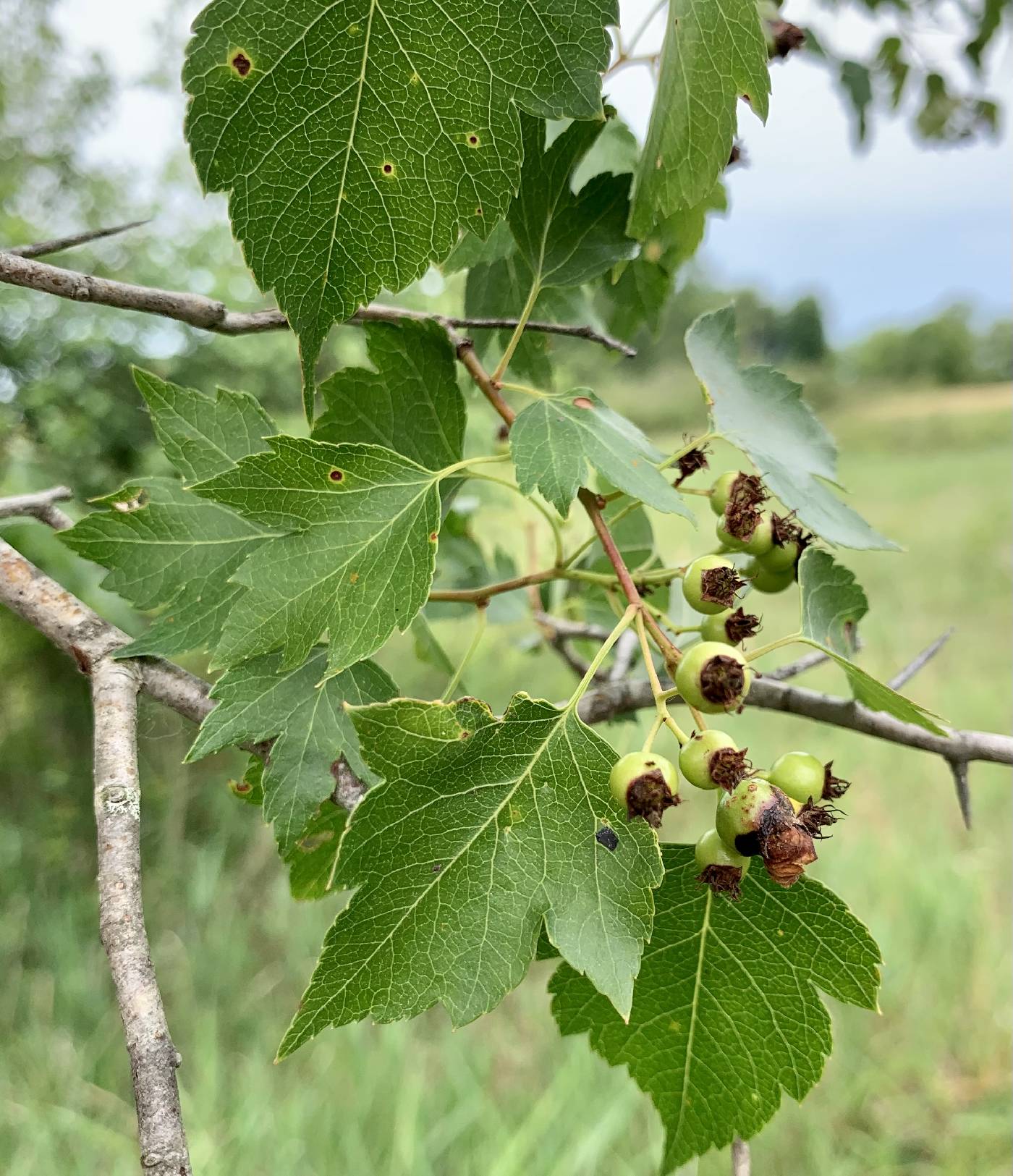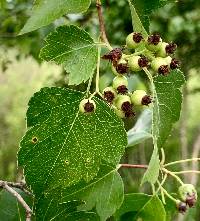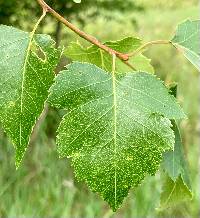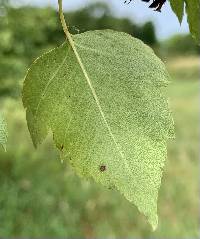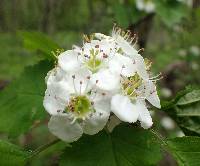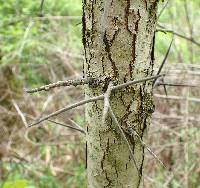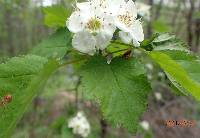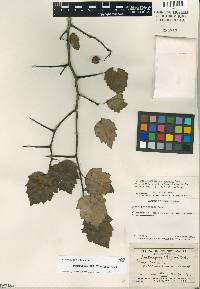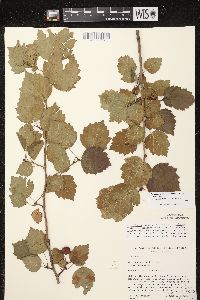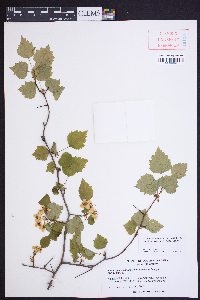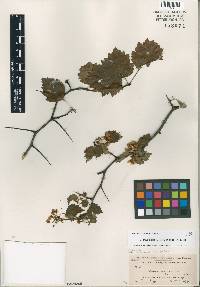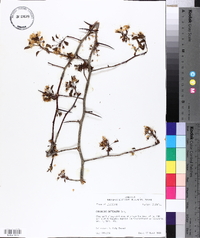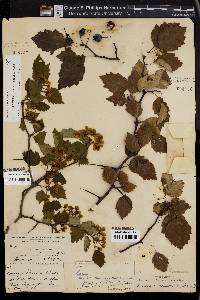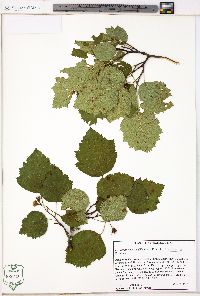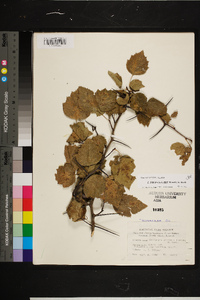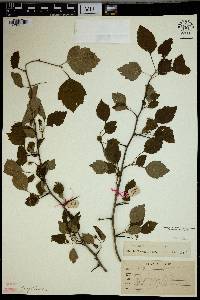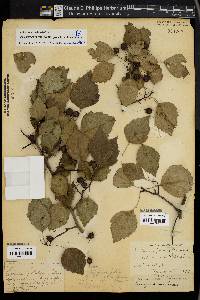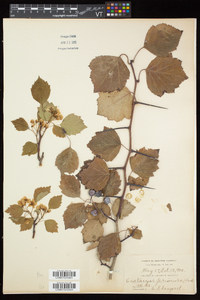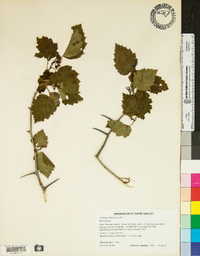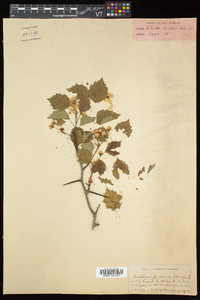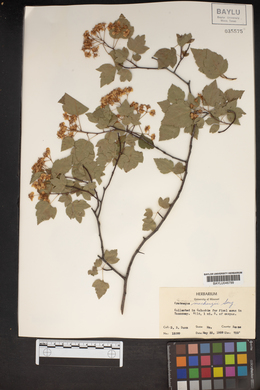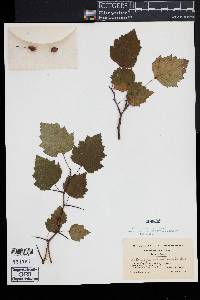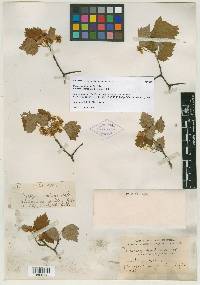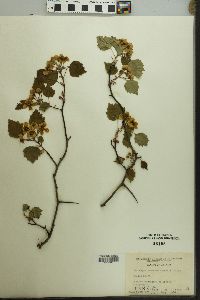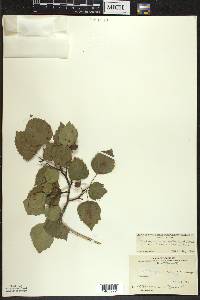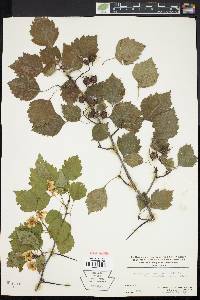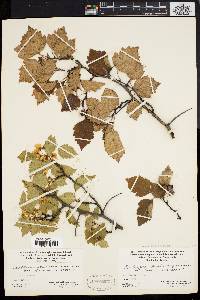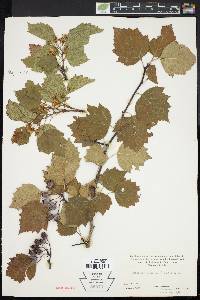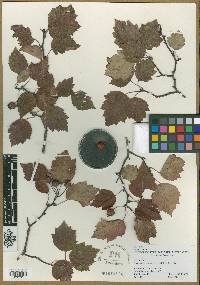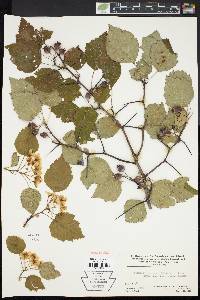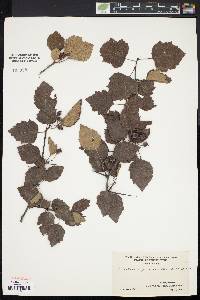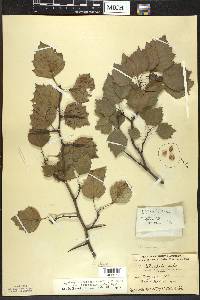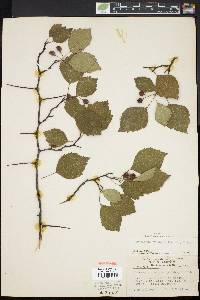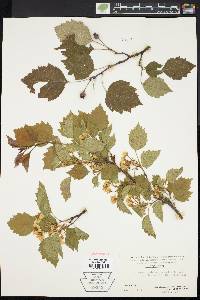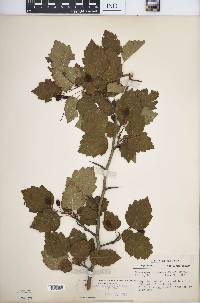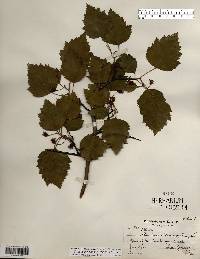
|
|
|
|
Family: Rosaceae
Waxy-Fruit Hawthorn, more...frosted hawthorn
[Crataegus bracteata Sarg., moreCrataegus howeana Sarg., Crataegus mackenzii Sarg. ex Mack., Crataegus mackenzii var. aspera (Sarg.) E. J. Palmer, Crataegus pruinosa f. angulata (Sarg.) E. J. Palmer, Crataegus pruinosa f. mecocantha Kruschke, Crataegus sitiens Ashe] |
Arborescent shrub or small tree to 8 m, with intricately thorny branches; lvs firm, mostly rounded or truncate to subcordate at base, rather broadly ovate or deltoid to rhombic or elliptic, with shallow lateral lobes, mostly 2.5-6 נ2-5 cm, usually glabrous from the first; petiole 1/3 to nearly as long as the blade; fls 1.2-2 cm wide, in small, nearly simple, glabrous cymes; sep narrow, entire or nearly so; fr red or sometimes greenish, mostly 1-1.5 cm thick, with prominent, usually elevated cal; nutlets (2)3-5; 2n=51, 68. Nf. to N.C., w. to Wis. and Okla. (C. compacta; C. crawfordiana; C. disjuncta; C. franklinensis; C. gattingeri; C. gaudens; C. jesupii; C. leiophylla; C. mackenzii; C. milleri; C. platycarpa; C. porteri; C. rugosa; C. virella) Gleason, Henry A. & Cronquist, Arthur J. 1991. Manual of vascular plants of northeastern United States and adjacent Canada. lxxv + 910 pp. ©The New York Botanical Garden. All rights reserved. Used by permission. From Flora of Indiana (1940) by Charles C. Deam Leaves ovate or elliptic, mostly 4-8 cm long, 2.5-5 cm wide, pointed or short-acuminate at the apex, abruptly contracted, rounded, or subcordate at the base, sharply or coarsely serrate nearly to the base, usually incised with 2-4 pairs of shallow, triangular lobes, firm in texture, glabrous, usually bluish green; petioles slender, a third to half as long as the blades, eglandular or with a few small glands; flowers 18-22 mm in diameter, usually 6-10, in glabrous, nearly simple or somewhat branched corymbs ; stamens usually about 20; anthers pink or sometimes pale yellow; calyx lobes lanceolate or narrowly deltoid from a broad base, entire or with a few shallow teeth toward the base; fruit subglobose, depressed-globose, or somewhat pyriform with an attenuate base, often 5-angled, 10-16 mm in diameter, with a broad, shallow, elevated calyx, dull or rarely bright crimson at maturity, or sometimes remaining green with dark dots and blotches, usually with a bloom; flesh thin, remaining hard and dry; nutlets usually 4-5, relatively large. Sometimes a small tree up to 6-7 m high, or more often an arborescent shrub, with dark gray, scaly bark and intricate ascending or finally spreading branches; the branchlets slender, glabrous, usually armed with many, long, slender or stoutish thorns. Common and general in Indiana, growing in pastures, thickets, or borders of woods, preferring dry soils along or near streams. [Deam follows E.J. Palmer in recognizing C. gattingeri as follows:] leaves ovate or deltoid, variable in size, mostly 2.5-5 cm long, and 1.5-4 cm wide, acute or acuminate at the apex, abruptly narrowed, rounded or on sterile shoots, truncate or cordate at the base, sharply serrate nearly to the base, usually with 2-4 pairs of triangular lobes, the terminal one often wedge-shaped and conspicuously elongated, thin but firm, glabrous, blue green; petioles very slender, half to two thirds the length of the blades; flowers 14-16 mm in diameter, in mostly 3-7-flowered, nearly simple, glabrous corymbs; stamens about 20; anthers pink or rarely white; fruit pyriform, oblong, or nearly globose, but usually attenuate at the base, 7-10 mm thick, 8-12mm long, with narrow, slightly elevated calyx, dull crimson, slightly pruinose, with thin flesh, remaining firm or hard; nutlets usually 4-5. A stout shrub or sometimes a small tree up to 4-5 m high, with dark gray, slightly scaly bark, crooked, ascending or spreading branches, and slender, flexuous, glabrous branchlets, armed with numerous slender or stout thorns. Scattered in southern Indiana, growing in thickets and on borders of woods, usually in well drained soil along streams. [E.J. Palmer in Deam described a new variety of Crataegus gattineri, var. rigida:] this variety differs from the type {Crataegus gattingeri] in the stouter, rigid, flexuous branchlets, and in the short, stout thorns, 1-2 cm long. Known in Indiana only from Perry County. Specimens examined: Indiana: Deam no. 27143, a quarter of a mile north of Cannelton, Perry County (type), April 24 and July 22, 1919. Type in herbarium of the Arnold Arboretum. Kentucky: Palmer no. 17716, open banks and hillsides, sandy soil, Livermore, McLean County, June 2, 1920. [E.J. Palmer in Deam also recognized C. platycarpa:] Leaves mostly ovate, 2.5-6 cm long, 2-5 cm wide, acute or short-acuminate at the apex, abruptly narrowed, rounded, truncate or on shoots, sometimes cordate at the base, sharply serrate nearly to the base, usually with 2-4 pairs of shallow, lateral lobes terminating in acuminate teeth, rather thin but firm, sparingly short-villous or scabrate above when young and more or less villous on the veins beneath; petioles slender, a third to half as long as the blades, generally slightly villous and often beset with a few stalked glands; flowers 18-22 mm in diameter, in usually 3-6-flowered, nearly simple, sparsely villous corymbs; stamens about 20 or sometimes fewer; anthers red or pale yellow; fruit subglobose or depressed-globose, 12-16 mm in diameter, 10-15 mm long, bright red or orange red at maturity; calyx broad, shallow, nearly sessile or slightly elevated; flesh thick, becoming succulent; nutlets 3-5. A tree up to 6-7 m high, with rough, gray bark and ascending or widespreading branches, the branchlets slender, armed with numerous long, slender thorns. Although this species seems to agree most closely with the Pruinosae group, the fleshy, bright red fruit and the slight but variable pubescence of the foliage and inflorescence, so uncommon in that group, suggest that it might be a hybrid between some form of the Pruinosae and Crataegus mollis. See also note under Crataegus no. 23 [C. kellogii]. Indiana specimens are from both dry and moist woodland. [E.J. Palmer in Deam describes C. rugosa as follows:] leaves ovate, broadly ovate or deltoid, pointed or short-acuminate at the apex, rounded, truncate or subcordate at the base or sometimes deeply cordate on shoots, sharply serrate nearly to the base, usually with 2-4 pairs of small, lateral lobes; petioles slender, a third to two thirds the length of the blades, firm at maturity, glabrous, usually yellowish green; flowers 20-22 mm in diameter, usually in 3-6- flowered, glabrous, nearly simple corymbs; fruit subglobose or depressed-globose, 14-17 mm in diameter, with broad, shallow, slightly elevated calyx, becoming dull red, with thin flesh, remaining hard and dry; nutlets usually 4-5. A tree up to 6-8 m high, or often a stout arborescent shrub, with dark, scaly bark and stout, ascending branches; branchlets often flexuous and armed with numerous, long, stout thorns. Crataegus rugosa is closely related to Crataegus pruinosa and apparently intergrades with it, although it often looks entirely distinct in its broader leaves and somewhat larger flowers and fruit. Generally distributed but not common in Indiana; found in thickets, pastures, and borders of woods, usually in well drained soil. |
|
|
|
This project was made possible in part by the Institute of Museum and Library Services [MG-70-19-0057-19].
Powered by Symbiota

